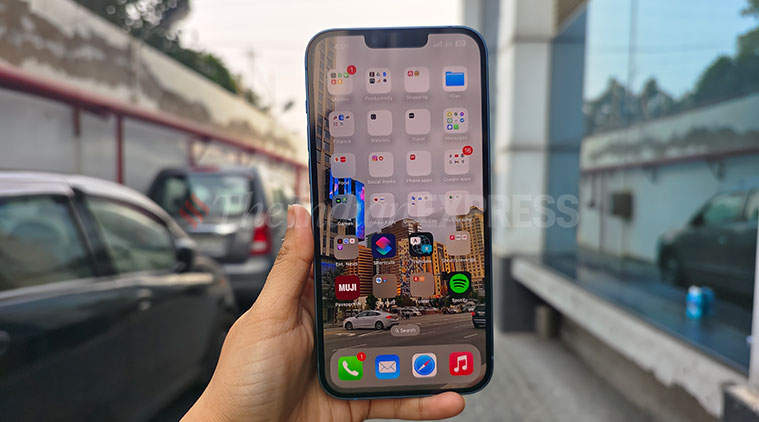Anuj Bhatia is a personal technology writer at indianexpress.com who has been covering smartphones, personal computers, gaming, apps, and lifestyle tech actively since 2011. He specialises in writing longer-form feature articles and explainers on trending tech topics. His unique interests encompass delving into vintage tech, retro gaming and composing in-depth narratives on the intersection of history, technology, and popular culture. He covers major international tech conferences and product launches from the world's biggest and most valuable tech brands including Apple, Google and others. At the same time, he also extensively covers indie, home-grown tech startups. Prior to joining The Indian Express in late 2016, he served as a senior tech writer at My Mobile magazine and previously held roles as a reviewer and tech writer at Gizbot. Anuj holds a postgraduate degree from Banaras Hindu University. You can find Anuj on Linkedin. Email: anuj.bhatia@indianexpress.com ... Read More
Here’s what smartphone makers should do in 2023
As we head into the new year, the smartphone industry needs to implement some changes. Here are four that I wish to see in 2023.
 In 2022, iPhone 14 Pro's demand was much higher than the regular iPhone 14 models. (Image credit: Nandagopal Rajan/Indian Express)
In 2022, iPhone 14 Pro's demand was much higher than the regular iPhone 14 models. (Image credit: Nandagopal Rajan/Indian Express) 2022 was a very different year for smartphone fans. Every big and small brand launched new smartphones throughout the year but the excitement was somewhere missing. It seemed that the pace of innovation had suddenly stopped and it was visible across newer phones. More and more smartphones looked like they were cut out from the same cardboard, thus resulting in devices that were nearly identical. Meanwhile, some brands went overboard and offered different versions of the same smartphone.
In short, it wasn’t the best year for the smartphone market. After covering the smartphone market for years, I have decided to make a wish list of what smartphone makers should do in 2023.
Xiaomi needs to streamline its portfolio
The world’s third-largest smartphone maker is battling a unique challenge in India. Its current portfolio of smartphones looks exactly like the last one. The Mi India website shows four models listed under the Redmi Note 11 series—it gets very confusing which model one can buy, and who Xiaomi is aiming each device at. And, buying Xiaomi’s high-end offering is also more confusing than ever.
The company offers multiple models as part of the Xiaomi 11, which is targeted at the mid-premium segment. Most buyers probably couldn’t tell the difference between the Xiaomi 11i 5G and 11i Hypercharge 5G. It has come to a point where it appears that Xiaomi is launching new phones one after the other with no clear purpose. It just wants to be present at every price point, so it continues to increase its market share. Xiaomi did the same with its sub-brand, Poco, which continues to churn out dozens of rebranded smartphones at a mindless speed.
In the third quarter, Xiaomi felt the heat when it missed earnings due to a lack of demand for its smartphones. After taking a lead in the smartphone market, Xiaomi fell upon hard times when it started making too many phones, most of which were mediocre. For 2023, Xiaomi needs to trim down its smartphone portfolio and offer a handful of models as part of a clear strategy.
 Apple recently axed the iPhone mini and introduced a larger iPhone Plus model. (Image credit: Shruti Dhapola/Indian Express)
Apple recently axed the iPhone mini and introduced a larger iPhone Plus model. (Image credit: Shruti Dhapola/Indian Express)
Bring back the iPhone mini and dump iPhone Plus
The iPhone 14 Plus was launched as a replacement for the iPhone mini but ended up as Apple’s worst-selling device in recent years. While we will never know what Apple’s internal expectations were with the iPhone 14 Plus, the device did end up performing poorly commercially, if we do believe some reports. The not-to-so-great response to the iPhone 14 Plus can be tied to two things: price and the Pros being better devices. No matter how Apple marketed the iPhone 14 Plus, the device was way too expensive. Starting at Rs 89,900, the Plus felt like a missed opportunity. For a little more, the iPhone 13 Pro Max made more sense than the iPhone 14 Plus and for obvious reasons.
Perhaps the biggest competition for the iPhone 14 Plus came in the form of the iPhone 14 Pro Max. Consumers preferred to spend more for the Pro Max because they knew in return they were getting more features for a higher price. The iPhone 14 Plus lacked the 48 MP sensor, the A16 processor, or the star Dynamic Island feature, which brought the plus-sized model in a super weird position. To be clear, the iPhone 14 Plus wasn’t a bad device, but it was positioned in such a way that it had a lesser chance to click with consumers.
Some also now say that the iPhone mini also met with a disappointing fate. Well, let me tell you that there is a difference in the positioning of each phone. The iPhone mini was always a niche device with its 5.4-inch screen and compact footprint but the Plus from day one was designed to woo mainstream users. So yes, replacing the mini with the Plus was a mistake on the part of Apple. More so, a miscalculation that the Plus form factor could replace the mini. Needless to say, I would appreciate it if Apple brings back the mini to the iPhone lineup in 2023 and instead dump the Plus in the bin.
 Samsung needs to find out a way to reduce the price of Galaxy Z Flip. (image credit: Shruti Dhapola/Indian Express)
Samsung needs to find out a way to reduce the price of Galaxy Z Flip. (image credit: Shruti Dhapola/Indian Express)
An ‘affordable’ version of Galaxy Z Flip
Regardless of where you stand on that argument, most would agree that the Z Flip is unique. It has an interesting design with a bendable screen that folds in half. The problem here is that the Z Flip represents a big missed opportunity for Samsung and foldable phones as a whole. The Galaxy Z Flip is the entry to the foldable smartphones, but it quickly becomes clear that Rs 90,000 isn’t what the majority of consumers will pay for a Z Flip, and for the more realistic, any price above Rs 55,000, real value relative to price takes a giant hit.
I completely understand Samsung’s positioning of the Z Flip: as an aspirational smartphone for those who want to flaunt a foldable phone that really stands out. Wouldn’t it be nice for Samsung to offer a more affordable version of the Z Flip for Rs 50,000? It needed to happen, and in my opinion, Samsung should look into this space. I think that the lower-price version of the Z Flip has a real chance to make foldables mainstream. Maybe, it needs to revive the “Galaxy FE” branding and develop a mid-range version of the Z Flip without too many compromises.
 OnePlus these days launch too many smartphones and that’s hurting its brand image. (Image credit: Nandagopal Rajan/Indian Express)
OnePlus these days launch too many smartphones and that’s hurting its brand image. (Image credit: Nandagopal Rajan/Indian Express)
OnePlus need to switch back to two flagship strategy
For years, OnePlus was the darling of the premium smartphone market but that “explosive” growth ended and now nobody knows what the brand stands for. The saving grace for OnePlus has been the quality of its flagship phones but cracks are already visible. There is a deeper problem that needs to be resolved and it’s the dual-brand strategy that’s impacting the image of OnePlus.
The decision to stick to higher-end phones and then also create a new range of OnePlus Nord phones targeted at the lower end has made things more confusing. Its mobile strategy is convoluted and brands like Apple are reaping the benefits at the cost of OnePlus in the Indian market. OnePlus fans are notoriously loyal, but there are signs this loyalty is now being tested to breaking point.
But not all has been lost. Despite its merger with Oppo and the confusing decisions it has taken recently, OnePlus can still go back to the old strategy of limiting two flagships a year and flip the narrative of a “flagship killer.” If it doesn’t do it, it will be yet another missed opportunity for OnePlus to go back to its roots and deliver on the promise of its name.








